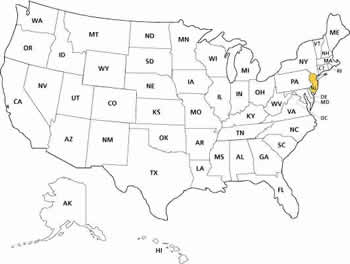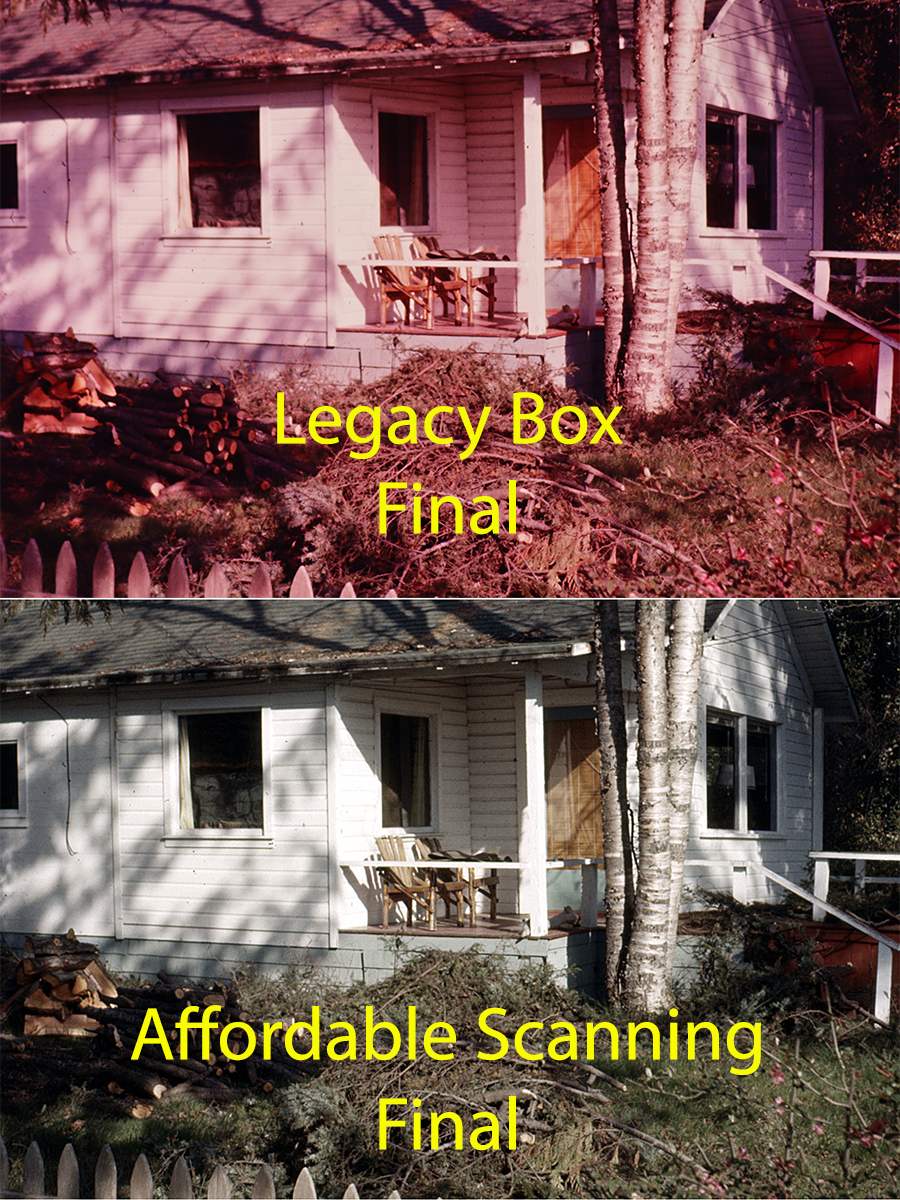Expert Slide and Photo Scanning Since 2002.
4,000 ppi Scanning and Premium Photoshop
Editing On Every Scan. 49¢ most slides.
We also can make PRINTS from your Slides.
www.Slides.Pics
New Jersey 35mm Slide, Photo & Film Scanning

All Scanning companies will NOT give you the same results, Click Here.
While we do NOT have a local office in your state, Affordable Scanning Services LLC has provided services for customers all over New Jersey, including Newark, Jersey City, Paterson, Elizabeth, Trenton, Camden, Clifton, Passaic, East Orange, Union City, and the United States and Canada since 2002. In all that time we have worked with multiple people, university's and businesses with many different needs and end results. Our customers are very important to us and they are our best salespeople.
Some of the newer scanning companies, unable to compete with our services, have resorted to sending their customer's 35mm slides, photos and films to India or other third world countries. That is bad enough but what we think is really underhanded, is that they are not up front about this minor little detail. Most of their customers have no idea that their family photo collction is being loaded into a cargo plane and flown 7,000 miles over the ocean to India. And that may be the safest part of the trip.
At Affordable 35mm Slide Scanning, your job does not leave our premises,in Waupun Wisconsin, until we return ship to you. We treat your precious photo collection just like it was our own and I can tell you for certain, that we would never be sending our heirloom family photos to a thirdworld sweatshop in order to save a few dollars.
All jobs are worked by 100% USA citizens who are talented and skillful and they really are artists at heart. They work your family photos just like they were working their very own photos. We realize that this is the only time that you are going to be converting your slides and photos to digital and we are going to make it a good Experience for you.
New Jersey History
"Around 180 million years ago, during the Jurassic Period, New Jersey bordered North Africa. The pressure of the collision between North America and Africa gave rise to the Appalachian Mountains. Around 18,000 years ago, the Ice Age resulted in glaciers that reached New Jersey. As the glaciers retreated, they left behind Lake Passaic, as well as many rivers, swamps, and gorges.
New Jersey was originally settled by Native Americans, primarily the Lenni-Lenape. The Lenape were loosely organized groups that practiced small-scale agriculture (mainly based on corn) in order to increase their largely mobile hunter-gatherer society in the region surrounding the Delaware River, the lower Hudson River, and western Long Island Sound. The Lenape society was divided into matrilinear clans that were based upon common female ancestors. These clans were organized into three distinct phratries identified by their animal sign: Turtle, Turkey, and Wolf. They first encountered the Dutch in the early 1600s, and their primary relationship with the Europeans was through fur trade.
Since the state's inception, New Jersey has been characterized by ethnic and religious diversity. New England Congregationalists settled alongside Scottish Presbyterians and Dutch Reformed migrants from New York. While the majority of residents lived in towns with individual landholdings of 100 acres (0.4 km²), a few rich proprietors owned vast estates. English Quakers and Anglicans owned large landholdings. New Jersey remained agrarian and rural throughout the colonial era, and commercial farming only developed sporadically. Some townships, though, like Burlington and Perth Amboy, emerged as important ports for shipping to New York and Philadelphia. The colony's fertile lands and tolerant religious policy drew more settlers, and New Jersey boasted a population of 120,000 by 1775.
Much of New Jersey was claimed by the Dutch. The Dutch colony of New Netherland consisted of parts of modern New York (New Amsterdam) and New Jersey. Although the European principle of land ownership was not recognized by the Lenape, Dutch policy required formal purchase of all land settled upon, and the first such purchase was of Manhattan, by Peter Minuit.
The entire region became a territory of England in 1664, when an English fleet under the command of Colonel Richard Nicolls sailed into what is today New York Harbor and took over the colony, against extremely low resistance.
During the English Civil War the Channel Isle of Jersey remained loyal to the Crown and gave sanctuary to the King. It was from the Royal Square in St. Helier that Charles II of England was first proclaimed King in 1649, following the execution of his father, Charles I. The North American lands were divided by Charles II, who gave his brother, the Duke of York (later King James II) the region between New England and Maryland as a proprietary colony (as opposed to a royal colony). James then granted the land between the Hudson River and the Delaware River (the land that would become New Jersey) to two friends who had remained loyal through the English Civil War: Sir George Carteret and Lord Berkeley of Stratton.
Settlement for the first 10 years of English rule was in the Hudson River region and came primarily from New England. On March 18, 1673, Berkeley sold his half of the colony to Quakers in England (with William Penn acting as trustee for a time), who settled the Delaware Valley region as a Quaker colony. New Jersey was governed as two distinct provinces, West Jersey and East Jersey, for the 28 years between 1674 and 1702. In 1702, the two provinces were united under a royal, rather than a proprietary, governor.
Rutgers University was originally chartered as Queen's College in 1766, and possesses a variety of architectural styles.New Jersey was one of the thirteen colonies that revolted against British rule in the American Revolution. The New Jersey Constitution of 1776 was passed July 2, 1776, just two days before the Second Continental Congress declared American Independence from Britain. It was an act of the Provincial Congress, which made itself into the state Legislature. To reassure neutrals, it provided that it would become void if New Jersey reached a reconciliation with Great Britain.
New Jersey representatives Richard Stockton, John Witherspoon, Francis Hopkinson, John Hart, and Abraham Clark were among the men who signed the United States Declaration of Independence.
During the American Revolutionary War, British and American armies crossed New Jersey numerous times and several pivotal battles took place in the state. Because of this, New Jersey today is often referred to as "The Crossroads of the Revolution."
On December 25, 1776, the Continental Army under George Washington crossed the Delaware River and engaged the unprepared Hessian troops in the Battle of Trenton. Slightly more than a week after victory at Trenton, on January 3, 1777, the American forces gained an important victory by stopping Cornwallis's charges at the Second Battle of Trenton. By evading Cornwallis's army, Washington made a surprise attack on Princeton, and successfully defeated the British forces there.
Later, American forces under Washington met the forces under General Henry Clinton at the Battle of Monmouth in an indecisive engagement. Washington attempted to take the British column by surprise; when the British army attempted to flank the Americans, the Americans retreated in disorder. The ranks were later reorganized and withstood the British charges.
In the summer of 1783, the Continental Congress met in Nassau Hall at Princeton University, making Princeton the nation's capital for four months. It was there that the Continental Congress learned of the signing of the Treaty of Paris (1783), which ended the war.
New Jersey was the third state to ratify the United States Constitution, which was overwhelmingly popular in New Jersey, as it prevented New York and Pennsylvania from charging and keeping tariffs on goods imported from Europe. In November 20, 1789, the state became the first in the newly-formed Union to ratify the Bill of Rights.
The 1776 New Jersey State Constitution gave the vote to "all inhabitants" who had a certain level of wealth. This included both women and blacks; although not married women, who could not own property. Both sides, in several elections, claimed that the other side had had unqualified women vote, and mocked them for use of "petticoat electors" (entitled to vote or not); on the other hand, both parties passed Voting Rights Acts. In 1807, the legislature passed a bill interpreting the constitution to mean universal white male suffrage, excluding paupers. (This was less revolutionary than it sounds: the "constitution" was itself only an act of the legislature.)
On February 15, 1804, New Jersey became the last northern state to abolish new slavery and enacted legislation that slowly phased out slavery. This lead to a gradual scale-down of the slave population, but by the close of the Civil War about a dozen African-Americans in New Jersey were still apprenticed freedmen. New Jersey initially refused to ratify the Constitutional Amendments banning slavery and granting rights to America's Black population.
In 1844, the second state constitution was ratified and brought into effect. Counties thereby became districts for the State Senate, and some realignment of boundaries (including the creation of Mercer County) immediately followed. This provision was retained in the 1947 Constitution, but was overturned by the Supreme Court of the United States in 1962 by the decision Baker v. Carr. While the Governorship was stronger than under the 1776 constitution, the constitution of 1844 created many offices that were not responsible to him, or to the people, and it gave him a three-year term, but he could not succeed himself.
Unlike the Revolutionary War, no Civil War battles took place within the state. However, throughout the course of the Civil War, over 80,000 enlisted in the Northern army to defeat the Southern Confederacy.
New Jersey was one of the few states to reject President Abraham Lincoln twice in national elections, and sided with Stephen Douglas and George B. McClellan during their campaigns. McClellan later became governor. During the war, the state was led first by Republican Governor Charles Smith Olden, then by Democrat Joel Parker.
In the Industrial Revolution, cities like Paterson grew and prospered. Previously, the economy had been largely agrarian, which was problematically subject to crop failures and poor soil. This caused a shift to a more industrialized economy, one based on manufactured commodities such as textiles and silk. Inventor Thomas Edison also became an important figure of the Industrial Revolution, having been granted 1,093 patents, many of which for inventions he developed while working in New Jersey. Transportation was greatly improved as locomotion and steamboats were introduced to New Jersey.
Iron mining was also a prevalent industry during the middle to late 1800s. Mines such as Mt. Hope, Mine Hill and the Rockaway Valley Mines created a thriving industry, which spawned new towns and was one of the driving forces behind the need for the Morris Canal.
Through both World Wars, New Jersey was a center for war production, especially in naval construction. Battleships, cruisers, and destroyers were all made in this state. In addition, Fort Dix (1917) (originally called "Camp Dix"), Camp Merritt(1917) and Camp Kilmer(1941), were all constructed to help American soldiers through both World Wars. New Jersey also became a principal location for defense in the Cold War. Fourteen Nike Missile stations were constructed, especially for the defense of New York City and Philadelphia, Pennsylvania. PT-109, commanded by Lt.(jg) John F. Kennedy, was built at the Elco Boatworks in Bayonne, and the aircraft carrier USS Enterprise (CV-6) was briefly docked at the Military Ocean Terminal in Bayonne in the 1950s before she was sent to Japan to be scrapped. In 1962, the world's first nuclear powered cargo ship, the NS Savannah was launched at Camden.
New Jersey became a prosperous state through the Roaring Twenties but fell from prosperity under the Great Depression. Begging licenses were even offered to the unemployed by the state government in order to provide money for those who could not be helped by the exhausted state funds.[10] During this time period, the zeppelin Hindenburg infamously went up in flames over Lakehurst, and the SS Morro Castle beached itself on the Jersey Shore after going up in flames while at sea.
In the 1960s, several race riots sprang up in New Jersey, the first of which occurred in Jersey City on August 2, 1964. Several other riots ensued in 1967, in the cities of Newark and Plainfield. Camden also dealt with race riots in 1971.
Throughout the twentieth century and into the twenty-first, New Jersey was afflicted by nor'easters that caused blizzards and flooding. Those are rather common storms in New Jersey and elsewhere on the east coast of the US, although hurricanes and tropical storms occasionally come to visit, such as Hurricane Floyd in 1999."
From:
https://en.wikipedia.org/wiki/New_jersey
|
About Our Company Copyright 2024 |
|
Email: Click Here After hours you will get a quicker response by using email. We answer email at ALL hours. Telephone messages are replied to during business hours. Affordable Scanning Services LLC 400 Bittersweet Lane Waupun, WI 53963
|
 Home
Home Order Forms
Order Forms



